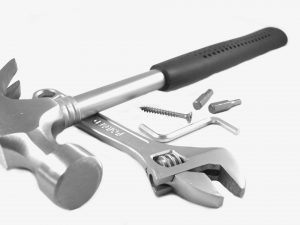There’s this bed, it’s around 50 years old and has been well used within my family. It started as a bunk bed for my father and his siblings and is now a single bed (no top bunk) in the family summer home. And although we have not used the top bunk in several years, we still have all the parts and the mattress just in case. It is referred to as the ‘taco bed’ because it has a special way of bending in the center that allows the user to feel like they are folded in half.

In order to “fix” the bed, my grandparents decided to throw the second mattress on top and tried to convince everyone that it made it “better”. Let me assure you, a second 50-year-old mattresses stacked on top of the first, does not fix the problem. More than a few years ago, I questioned their logic, asking how an old mattress would fix a broken and uncomfortable bed? They responded with things like, more cushion, and you couldn’t feel the springs of the first mattress. Sure, this makes some sense, but the top mattress has the same issues, so what is going to fix those. Despite my effort to understand and address the issue nothing has changed.
Oddly enough I was reminded of this incident while reading Twenty Years of EdTech by Martin Weller. “Attempting to convince educators that a complex technology might solve a problem they don’t think they have is therefore unlikely to meet with widespread support” (2018, pp.46) The pushback I received when trying to fix a mattress, is similar to the pushback from teachers to implement new technologies in the classroom. I can’t help but think of the phrase, “If it aint broke, don’t fix it.” Why at any point would an educator completely change what they are doing if it’s a) working or b) the alternative seems over complicated and irrelevant.

First, educators need to recognize that there is a problem in the educational field. If there is no problem, then there is no willingness to change. Second, educators need to be given the time and resources to DEVELOP technology that will SUPPORT their new PEDAGOGY. I can’t help but notice a top-down trend in educational technology. Where new amazing technologies are developed and then teachers try to force the technology to “fit” the traditional educational model.
I believe the next step in innovative and applicable education is starting with pedagogy, then looking at curriculum and ending with discussing what technologies are needed in order to make it happen. This way we can re-invent education and learning, to cater to 21st century needs and skills. A key to successfully restructuring educational environments is understanding what has changed in open and distributed learning over the past few decades.

As educators we need to critically reflect on our practices and continually adjust and improve our pedagogies. It is crucial that education changes at pace with society in order to meet the needs of a diverse set of learners.
I believe your quote by Weller may be referencing the notion of creating a problem to inject a solution. Educational technologies are for the most part introduced from the side of corporate interests rather than from top-down administrative and management levels of the education system. This is perhaps why there is little consensus among educators, but the recognition that learning must be individuated to be effective also speaks to the lack of consensus and allows educators to pick and choose technologies appropriate to their expertise.